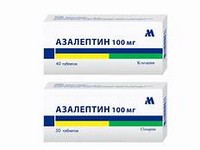Levomepromazine
CLINICAL USE
Treatment of schizophrenia Adjunctive treatment in palliative care Nausea and vomiting
DOSE IN NORMAL RENAL FUNCTION
Schizophrenia: Oral, initially 25–50 mg daily, increasing to 100–200 mg in 3 divided doses; maximum dose 1 g dailyPalliative care: Oral: 12.5–50 mg every 4–8 hours —IM/IV: 12.5–50 mg every 6–8 hours —SC Infusion: 5–200 mg daily —
PHARMACOKINETICS
DOSE IN RENAL IMPAIRMENT
GFR (mL/MIN)
DOSE IN PATIENTS UNDERGOING RENAL REPLACEMENT THERAPIES
IMPORTANT DRUG INTERACTIONS
Potentially hazardous interactions with other drugs
ADMINISTRATION
Reconstition
–
Route
Oral, IV, IM, SC
Rate of Administration
–
Comments
For a subcutaneous infusion dilute in sodium chloride 0.9% and give via a syringe driverCompatible with diamorphine For IV injection, dilute with an equal volume of sodium chloride 0.9%
OTHER INFORMATION
In renal disease there is an increased risk of cerebral sensitivity

